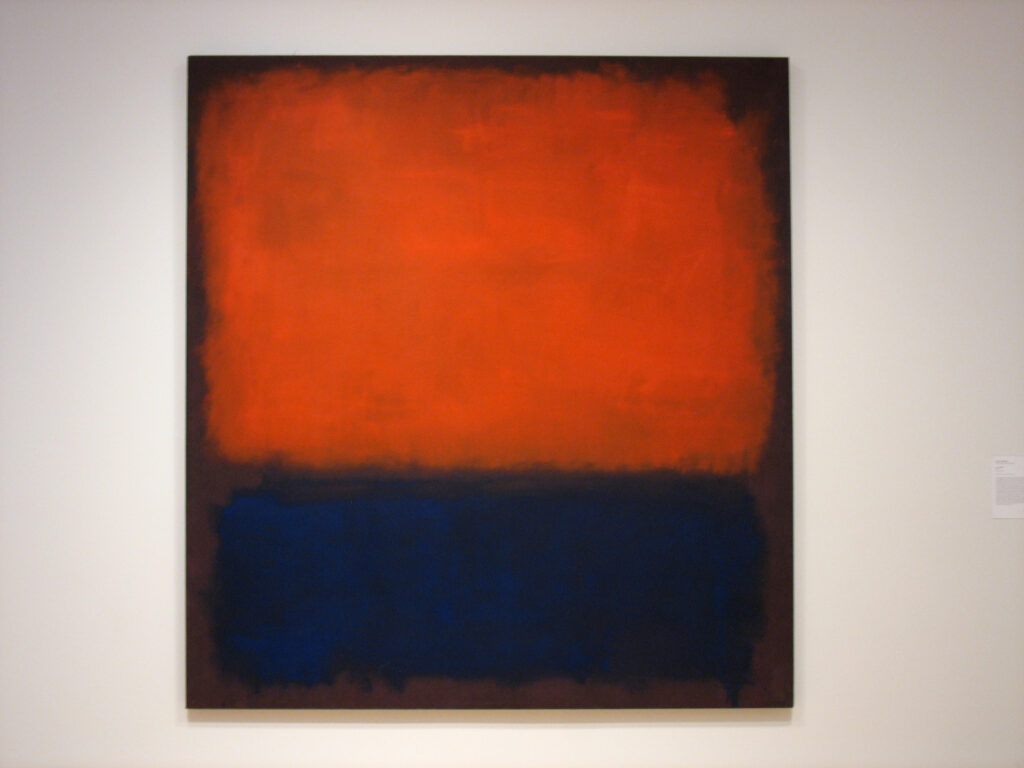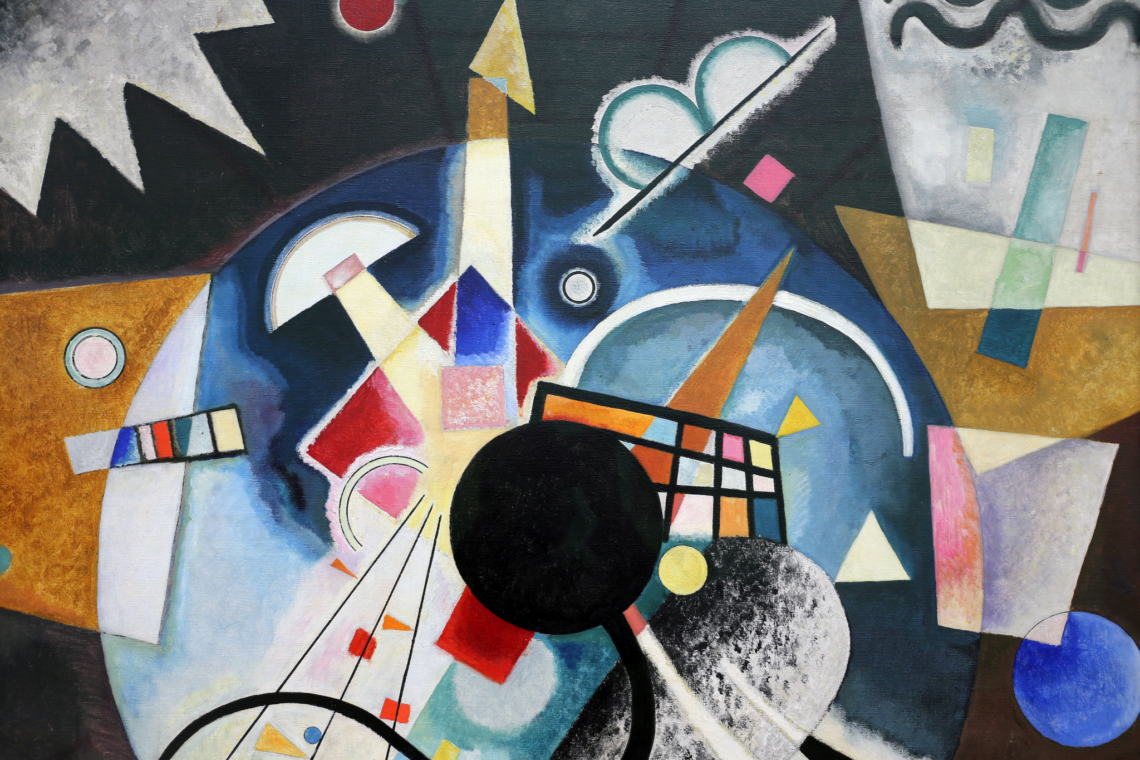Could there be a more revolutionary, controversial and avant-garde artistic style in the 19th and 20th centuries than abstract art? Abstract art has left a lasting impact on the contemporary art world and continues to gain momentum among artists worldwide. The variety of abstract art styles, including Suprematism, Abstract Expressionism, Monochrome and Block color are all representative of the incredibly diverse and versatile nature of abstraction.
The rejection of traditional accurate representational art forms is a distinct common feature among abstract artists, who have instead chosen to express personal emotions and meaning through their exploration of pure form, geometric shapes, bold color and texture, thus leaving behind recognizable objects and figurative compositions. Early pioneers of abstract art (Wassily Kandinsky and Kazimir Malevich) and their successors (Mark Rothko, Joan Mitchell) are greatly celebrated for their visionary, groundbreaking style and innovative techniques. They chose to embrace modernity and progress, changing the course of art history forever.
1: Wassily Kandinsky

We cannot talk about the subject of abstract art without first mentioning Russian painter Wassily Kandinsky. This prominent figure helped popularize this art style worldwide. Kandinsky was a visionary artist who experimented with different ideas, including a radical and innovative theory on the link between emotions and colors, which suggests colors have unique vibrations that evoke complex, therapeutic emotions in the viewer.
Kandinsky strongly believed in the power and absolute necessity of abstract art. He saw the artist as a kind of prophet who had the potential to build a New Age, which he theorized in his book, Concerning the Spiritual in Art (1912). Kandinsky’s avant-garde style is defined by vibrant colors, expressive brushstrokes and sharp shapes, showcasing a move away from traditional aesthetic principles, in an effort to revolutionize the artistic scene of the time.
2: Piet Mondrian

Second on the list, we have Dutch painter Piet Mondrian, whose impact on abstract art and Modernism is truly undeniable. His distinctive style has left a lasting legacy, which influenced many artists who came after him. Mondrian is best known for his highly-abstract, grid-based paintings which feature clearly defined rectangles filled with primary colors. This limitation to the three primary colors combined with a geometric-style is representative of Mondrian’s theory of “universal beauty”, harmony and purity.
Mondrian was the founder of the Neoplasticism movement (De Stijl), which embraced pure abstraction over any other art form. Artists who adhered to this movement only used geometric shapes as well as primary and black and white colors. Mondrian was highly influenced by Cubism and later on developed his own unique voice, which is so imprinted in our minds.
3: Kazimir Malevich

In the same vein as Kandinsky and Mondrian, Russian avant-garde painter and theorist Kazimir Malevich rejected representational painting, preferring instead a form of expression closely tied with spiritualism and pure abstraction. After having experimented with various styles, such as Cubism and Fauvism, Malevich simplified his style and started experimenting a lot with squares, triangles and circles, developing what would later be known as Suprematism.
His 1915 manifesto entitled From Cubism to Suprematism pushed forward “the supremacy of pure artistic feeling”, which aimed to deconstruct art. Malevich is most famous for his emblematic Suprematism paintings Black Square and Black Circle (1915), with their emphasis on the geometric form and anti-materialist philosophy. However, Malevich was not a friend of the Soviet state. His art was deemed to be “bourgeois” and not in line with the socialist values. As Stalin rose to power, Malevich was forced to abandon his personal artistic vision and return to a form of realism.
4: Mark Rothko

Mark Rothko is a Latvian-American Abstract Expressionist painter, best known for his colorful, large scale compositions, characterized by visible brushstrokes and blocks of color, which aimed to provoke a strong emotional response in the viewer. His signature style was the fruit of a very personal and precise method, composed of fast and light brushstrokes and the application of a thin layer of pigment mixed with binder all over an uncoated canvas, which he painted over in order to create contrasted, overlapping colors. Rothko mixed different unconventional ingredients together, including eggs and glue, to achieve this unique result. The lack of figurative representation in Rothok’s paintings allows for more freedom to express particular moods and emotions.
5: Jackson Pollock

American painter Jackson Pollock is a key figure in abstract expressionism. His style of painting was exemplified by a spontaneous and free spirited attitude, known as his famous signature “drip paint” technique, where Pollock would pour paint onto a canvas which had been laid flat on the floor. Instead of using traditional paint brushes and easels, the artist would use various objects such as knives and sticks to paint. Pollock is closely tied with the concept of “action painting”, a style of painting which uses bold gestures and dynamic brushstrokes, where the body is more engaged than in traditional painting. Pollock once wrote: “I feel nearer, more a part of the painting, since this way I can walk round it, work from the four sides and literally be in the painting.” The effect conveyed a sense of urgency and frenzy united with a new, much more extreme form of abstraction.
“It seems to me that the modern painter cannot express this age, the airplane, the atom bomb, the radio, in the old forms of the Renaissance or of any other past culture. Each age finds its own technique.” (Jackson Pollock)
6: Agnes Martin

Best known for her meditative geometric, minimalist compositions, Canadian-American painter Agnes Martin is one of the most prominent figures in the field of abstract expressionism. Very much inspired by Eastern philosophies (Taoist and Zen), Martin developed her style centered around geometric abstraction, which features a palette of beige, creams, grays and browns. Martin’s body of work is a testament to the painter’s devotion to the harmony and beauty of nature. “The Tree” (1964) is an example of the artist’s grid paintings style, which features fine vertical lines and “lightly shaded horizontal bands” (source: MoMA). While the painting bears no direct connection to the title, “The Tree” is not an attempt to represent reality, but instead, can be seen as an effort to convey what the painter called “abstract emotions”.
“When I first made a grid, I happened to be thinking of the innocence of trees, and then a grid came into my mind and I thought it represented innocence, and I still do, and so I painted it and then I was satisfied. I thought, ‘This is my vision.’” (Agnes Martin)
7: Joan Mitchell

Joan Mitchell has vastly contributed to the abstract expressionist movement. This American painter is part of the second generation of abstract expressionists, and whilst these painters kept the importance of the gestural approach and the use of color drips, they were much more interested in the outside world. Mitchell’s one-of-a-kind paintings often feature bold, bright colors and expressive brushstrokes. Her innovative techniques (““staining” of raw and unprimed canvas with diluted paint”, source: theartstory.org) and her distinctive, instantaneous approach to painting, can be understood as the artist’s attempt to unveil the hidden meaning behind abstract forms that she would perceive in her study of urban landscapes, water, trees, poetry and still lives. Mitchell’s paintings truly stand out from the crowd with their violent and chaotic quality, which truly seem to come alive before our eyes.
“I’m trying to remember what I felt about a certain cypress tree and I feel if I remember it, it will last me quite a long life.“ (Joan Mitchell)
8: Ad Reinhardt

Ad Reinhardt strived for the purity of abstraction. This American painter strongly felt that art should be non representational and absolutely separated from everyday life. Reinhardt loved the square format, formal purity and worked with a limited, monochromatic color palette. Reinhardt’s early paintings feature a more varied color palette (red, orange, pink, blue and white) and small geometrical shapes. From the 1950s onwards, Reinhardt exclusively painted in monochrome blocks of color with his “Red series” and “Blue series”. He later on developed his signature style with his “ultimate black” and “black” series of paintings. The painter devoted himself exclusively to the color black, which he considered to be “the strictest formula for the freest artistic freedom”.
“As an artist I would like to eliminate the symbolic pretty much, for black is interesting not as a color but as a non-color and as the absence of color.” (Ad Reinhardt)
9: Cy Twombly

American painter, photographer and sculptor Cy Twombly is best known for his large-scale, free-scribbled, graffiti-style paintings. What would later become known as his recognizable gestural approach to line and color was strongly influenced by various external factors, including the work of painter Paul Klee, Twombly’s time in the army where he worked as a cryptologist and the New York School (“informal group of American poets, painters, dancers, and musicians active in the 1950s and 1960s in New York City.” source: Wikipedia), who encouraged Twombly to experiment with a simplified form of abstraction.
From the late 1950s onwards, Twombly’s work was marked by his many travels to Italy, where he became fascinated by tribal art, Primitivism and Roman mythology. At that time, Twombly was working a lot with colors to create his lively paintings. He moved away from these bright colors to create “blackboard” canvas paintings, which often featured thin white lines and loops, scribbled over black canvases, which echoed chalk on a blackboard. Twombly’s work can best be understood as an intersection between abstraction, his study of the past, diagrams, visual information from his everyday life and classical poetry.
10: Helen Frankenthaler

American painter Helen Frankenthaler was famous for her large-scale, abstract expressionist paintings. Her body work is characterized by the use of spontaneous, soft and flowing shapes, abstract compositions, a pastel color palette and her unique “soak-stain” technique. This technique was the result of thinned-down oil paint with turpentine, which the artist would then apply on raw canvas that had been laid on the floor. Frankenthaler would manipulate the canvas by lifting and tilting it, applying more layers of paint with paint rollers and sponges and letting the paint dribble, flow and sink freely into the canvas. This sometimes produced a translucent, “halo-like” effect, along with other various shapes which would appear on the untreated areas of the canvas.
Krankenthaler is best remembered for having taken part in the color field painting, a style of painting that would use hues, simplified abstract compositions and the application of large areas of color to the canvas. From the 1960s onwards, Frankenthaler’s style became more and more simplified and symmetrical, marked by a shift in composition, where the artist placed strips of paint closer to the edges of the canvas. Her style continued to evolve and change over the years. In the 1970s, the painter experimented with larger abstract shapes, and in the 1980s, her work gained a calmer, more serene quality, made visible through the use of gentler colors and brushstrokes. Frankenthaler’s love for landscapes, beautiful abstract compositions and her spontaneous approach to painting has left a lasting impression in the field of abstract expressionism, which continues to resonate today.
“There are no rules. That is how art is born, how breakthroughs happen. Go against the rules or ignore the rules. That is what invention is about.” (Helen Frankenthaler)













